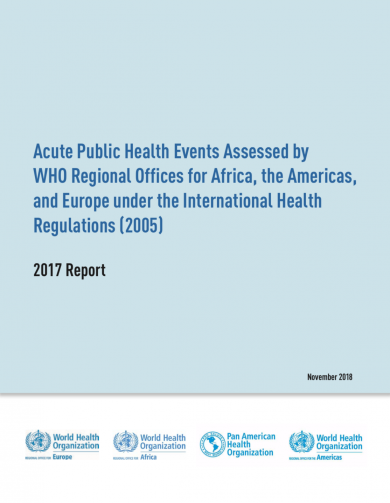
Acute Public Health Events Assessed by WHO Regional Offices for Africa, the Americas, and Europe under the International Health Regulations (2005) - 2017 Report
Since 1997, the World Health Organization (WHO) has established a mechanism for outbreak detection, verification, and information sharing as part of global disease surveillance. With the entry into force of the International Health Regulations (2005) (IHR) in June 2007, WHO and State Parties committed to detect, verify, assess and report
events that may pose a risk to international public health. Through the IHR channels, WHO and State Parties maintain surveillance, reporting, and response capacities at country, regional, and global levels not only for infectious diseases but also for other categories of potential threats (all-hazards approach). Timely communication of potential public health threats aim to enable rapid response measures for those at risk.
This report describes public health events detected, assessed and reported from 2001 to 2017, with a primary focus on the year 2017, in three WHO Regions: Africa, the Americas, and Europe. The data on public health events that occurred in State Parties from 2001 to 2017 were recorded by WHO in its Event Management System (EMS), a password-protected web-based tool accessible to professional personnel at WHO Country, Regional, and Headquarter Office levels.



